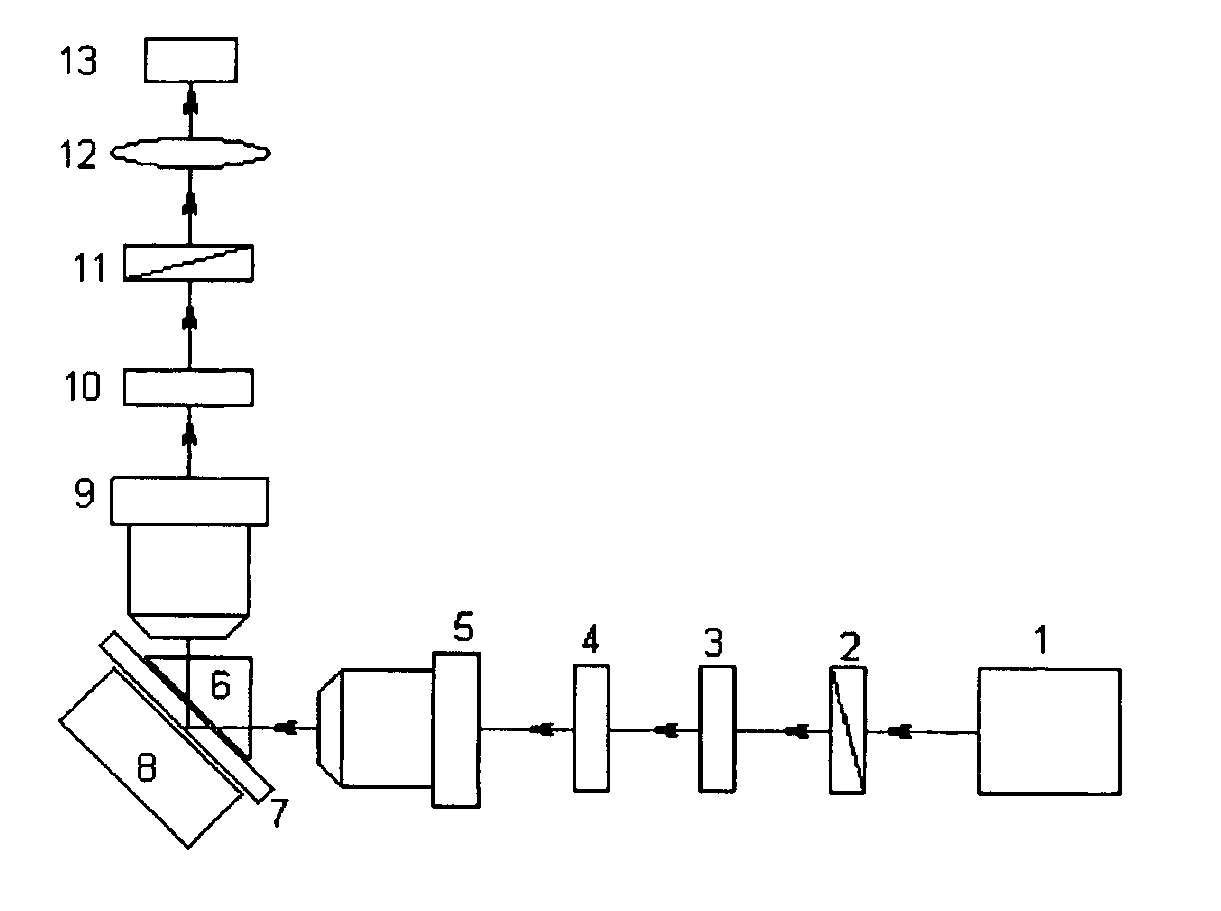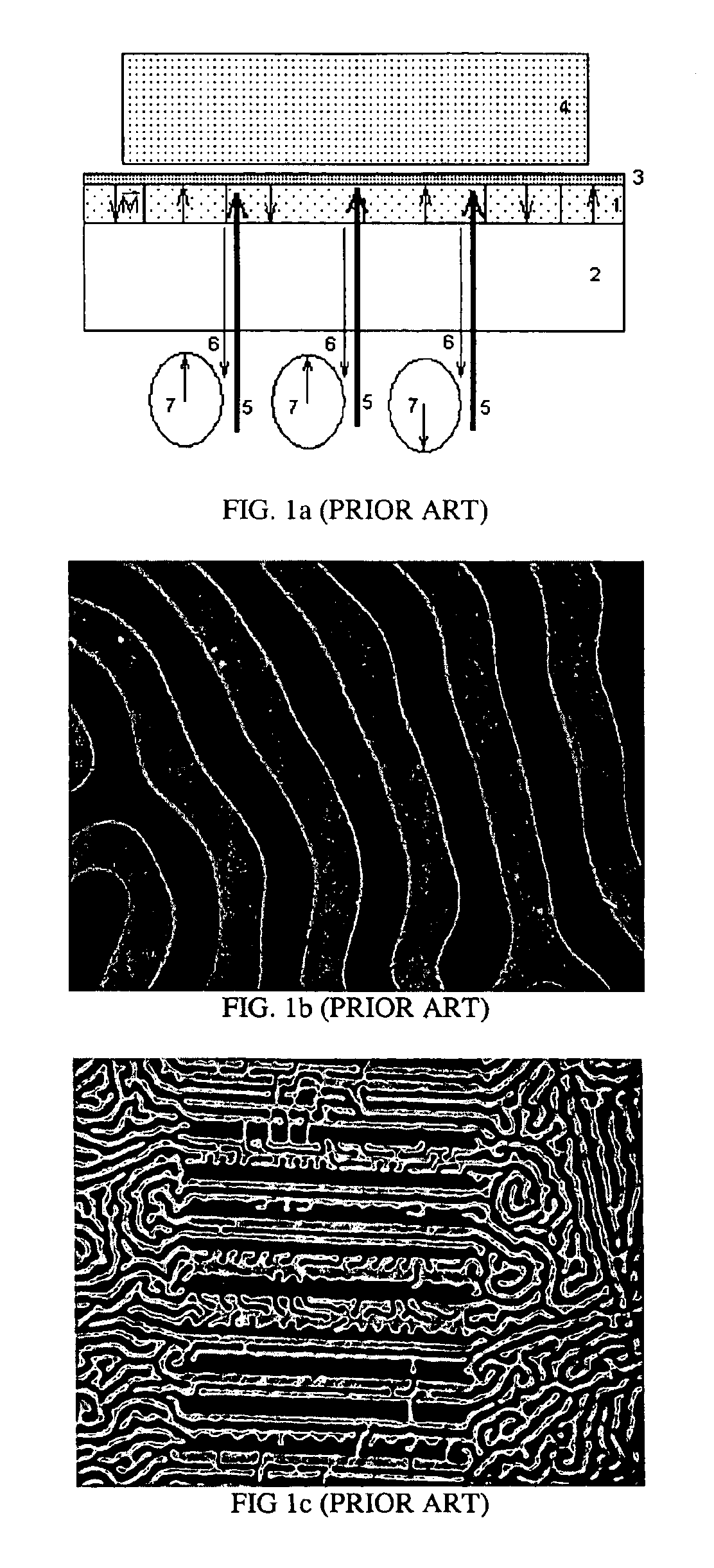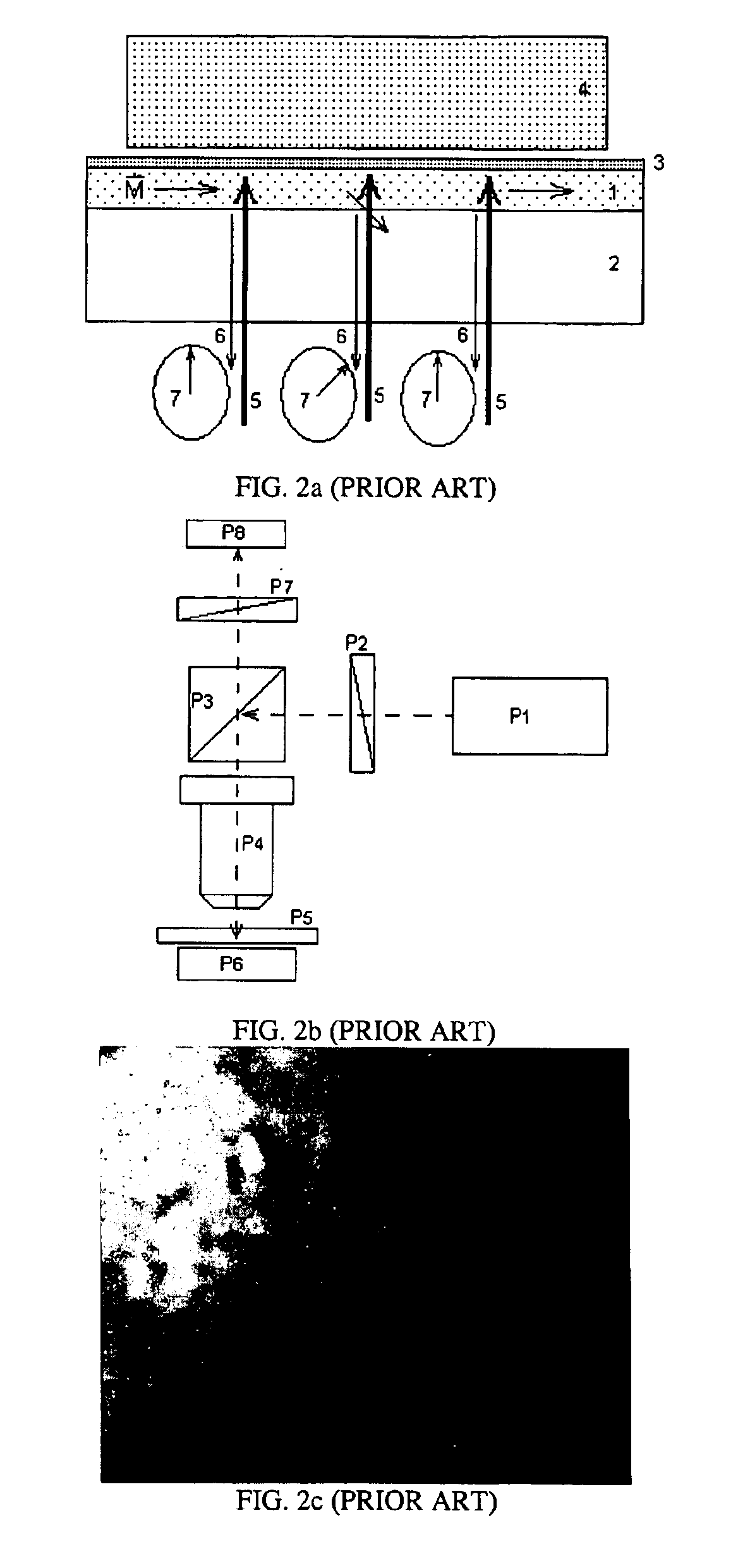Magnetic field and electrical current visualization system
a technology of electromagnetic field and electrical current, applied in non-linear optics, instruments, optics, etc., can solve the problems of mr sensor-based instruments not always providing the requisite spatial resolution and speed, and the cost of known squid microscopes is generally high
- Summary
- Abstract
- Description
- Claims
- Application Information
AI Technical Summary
Benefits of technology
Problems solved by technology
Method used
Image
Examples
example 3d
[0136 plots of numerically calculated magnetic energy in different (111) iron garnets are given in FIGS. 10a and 10b. FIG. 10a shows the easy axes tilted with respect to the plane of the film and the hard axes slightly tilted from the (100), (010) and (001) directions. This is the case of pure cubic anisotropy. Another common type of magnetic anisotropy in thin film YIGs is shown in FIG. 10b, where a single easy axis lies in the plane or close to the plane of the film. Such an anisotropy may be preferred for MOIF structures used in the different embodiments. An exemplary experimental plot of the magnetic moment of such a film as a function of the applied perpendicular field is presented in FIG. 10c. Example plots of Faraday rotation as a function of the in-plane magnetic field applied along the hard and easy axes are shown in FIG. 10d. The very low coercivity and two orders of magnitude difference in the in-plane hard axis and perpendicular saturation field are clearly illustrated.
[...
PUM
| Property | Measurement | Unit |
|---|---|---|
| angle | aaaaa | aaaaa |
| domain size | aaaaa | aaaaa |
| refractive indices | aaaaa | aaaaa |
Abstract
Description
Claims
Application Information
 Login to View More
Login to View More - R&D
- Intellectual Property
- Life Sciences
- Materials
- Tech Scout
- Unparalleled Data Quality
- Higher Quality Content
- 60% Fewer Hallucinations
Browse by: Latest US Patents, China's latest patents, Technical Efficacy Thesaurus, Application Domain, Technology Topic, Popular Technical Reports.
© 2025 PatSnap. All rights reserved.Legal|Privacy policy|Modern Slavery Act Transparency Statement|Sitemap|About US| Contact US: help@patsnap.com



